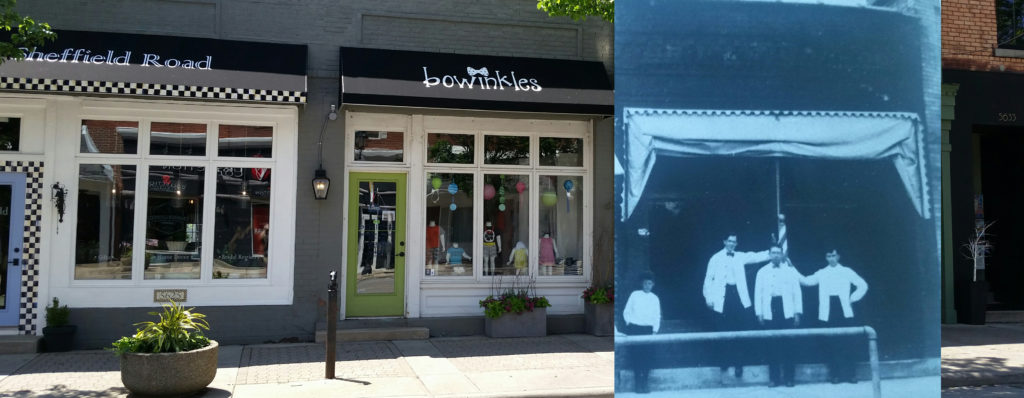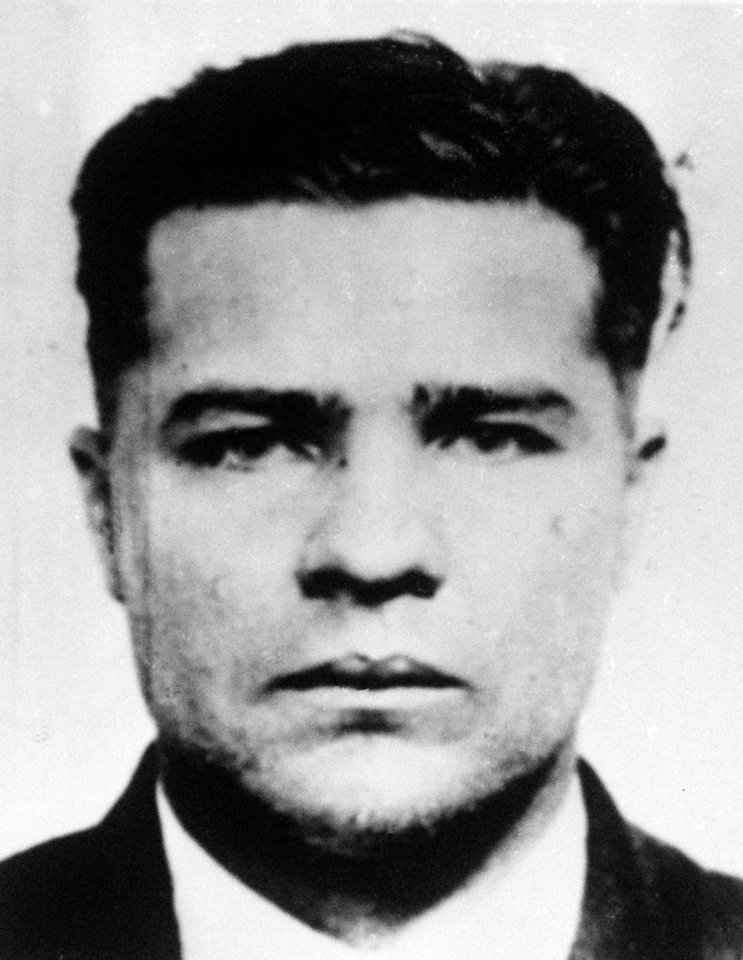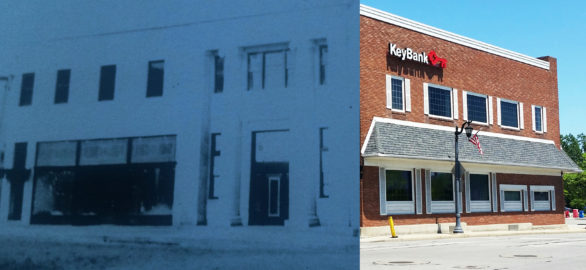By Don Radebaugh — Downtown Sylvania, Ohio is all of two blocks. Blink twice and you might miss it; but if you stop long enough to look and listen, you’ll discover a treasure trove of off-the-charts true stories that’ll keep you coming back for more. And some will literally send shivers down your spine, like the murder on Main Street in 1857 (future story at HistoryMysteryMan.com).
But this story starts at The Farmers and Merchants Bank (cover photo) on the northeast corner of Main and Monroe Street. When you whiz by these days, you’ll note that it’s now a Key Bank, but the building itself is original. And it was in this very bank where on February 5, 1930, notorious bank robber and murderer Charles “Pretty Boy” Floyd and his accomplices robbed the unsuspecting employees and sped off with less than $2,000.

Local legend has it that the holdup actually originated across Main Street at Franklin “Pop” Green’s barbershop where Floyd stopped in for a shave and a haircut before he robbed the bank directly across the street. Built in 1897, the building was used as a barbershop until 1974. Green operated it as a barbershop from 1905 to 1948. Today, the locals know the establishment as the Executive Diner on Main.
Back to the bank robbery. With a getaway driver behind the wheel, Floyd and three others entered the bank and demanded money. A very alert cashier by the name of John C. Iffland closed the vault when he saw the men coming. Iffland ultimately paid the price and was severely beaten with a pistol for his actions, yet because he got the vault time-locked in time thousands of dollars were saved.
The law caught up with Floyd in Toledo, Ohio on May 20, 1930. He was convicted of the Sylvania bank robbery and sentenced on November 24, 1930 to 12–15 years in an Ohio State penitentiary, but he escaped, vowing to “never to be taken alive.” He eventually got his wish.

Charles Arthur Floyd was born in Bartow County Georgia on February 3, 1904. After his family moved to Oklahoma, Floyd turned to crime to escape the poverty of the Depression era, which hit farmers in the “Dust Bowl” especially hard.
After serving a four-year prison sentence for robbing a Kroger store payroll delivery in St. Louis, Missouri, Floyd received the nickname, “Pretty Boy” from a girlfriend at a Kansas City boardinghouse. Other accounts suggest that he received his nickname when he worked in the oil fields where he would wear a white button-up dress shirt and slacks to work. The men on the rig began calling him “Pretty Boy”. However he got the name, he came to hate it.
Known for his reckless use of a machine gun and violent bank robberies, Floyd began robbing banks in Ohio before moving on to other states. During his crime spree, bank insurance rates in Oklahoma were reported to have doubled. He became popular with the public by allegedly destroying mortgage papers at many of the banks he robbed, liberating many debt-ridden citizens. Known for sharing money he had stolen with other poor people, he was often protected by Oklahoma locals, who dubbed him “Robin Hood of the Cookson Hills.”
It’s unknown how many people Floyd actually killed over during his life of crime but he was certainly the suspect in many, including the deaths of Kansas City brothers Wally and Boll Ash, found dead in a burning car on March 25, 1931. A month later on April 23, members of his gang killed Patrolman R. H. Castner of Bowling Green, Ohio. Floyd also killed federal agent Curtis C. Burke in Kansas City, Missouri. In 1932. Former sheriff Erv Kelley of McIntosh County, Oklahoma was killed while trying to arrest Floyd on April 7.
After John Dillinger was caught and killed on July 23, 1934, Floyd became “Public Enemy No. 1” and a $23,000 bounty was offered for his capture, dead or alive.
Floyd met his untimely death in an East Liverpool, Ohio cornfield after local law enforcement officials were tipped off that suspicious characters were lurking just outside of town. It’s unclear who exactly killed Floyd — both the FBI and local law enforcement officials took credit — but he was shot twice, with his last words reportedly being, “I’m done for; you’ve hit me twice.” Two FBI agents left to get an ambulance but Floyd died 15 minutes after he was shot on October 22, 1934.
His funeral was attended by at least 20,000 people, probably more, and remains the largest funeral in Oklahoma history.
Sources:
Images of America, Sylvania, by Gaye E. Gindy and Trini L. Wenninger, copyright 2006.
Biography.com


I own and now rent nightly, the actual hideout house from that Sylvania bank robbery as collaborated by an eye witness at the time, on tape in 2009. She has since pasted away, and several others said their relatives all agreed with her eye witness account
That’s fascinating. Where is that?
So, those 20,000 people wanted to be sure he was dead? Hope it wasn’t out of sorrow or respect for him.
That I don’t know, but a very interesting observation. Thanks for reading it!
Very interesting. Didn’t so of those gang s Do some robbing on t he east side also.
Front and concaul ?l have a old pic my mom give me
I’d love to see that pic. Thanks for checking in.